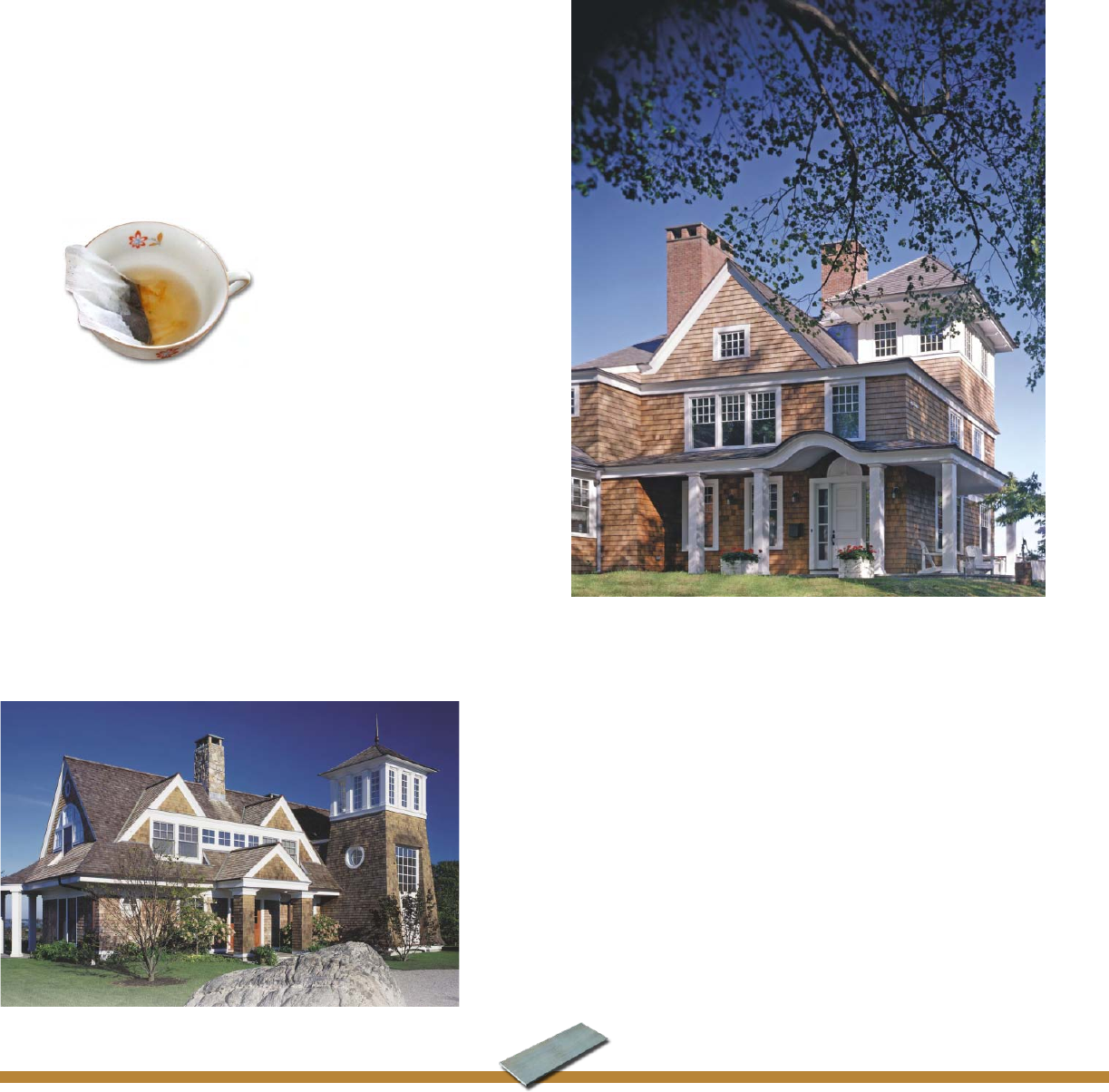Use and Care Guide

Follow the manufacturers’ instructions for best performance
Extractive bleeding - Facts
Extractives are contained in the wood of all tree species.
Dry wood is composed of both organic and .01-1.0%
inorganic materials. The organic components are
referred to as extractives which include tannins,
essential oils, and resins, (western red cedar is non-
resinous). These extractives contribute to properties in
the wood such as color, odor, insect resistance, and can
be released with the use of solvents such as water,
alcohol, benzene and ether, often found in paints or
stains. Extractives deposited or diffused onto the surface
by water will leave a reddish-brown streak or stain after
the solvent (water) evaporates. This extraction can be
compared to a tea bag placed in hot water. As moisture
generally is the primary cause, this streaking can be
avoided by keeping the product dry during shipping and
storage, and on the job site.
Before application, drying the cedar shake or shingle to
its equilibrium point is essential. It should be shipped
with a protective waterproof cover.
On the job site, keep the wood
dry and (if possible) out of the
elements, off the ground and
under cover. If storing over new
concrete such as a freshly
poured concrete slab or over
damp ground, place a moisture
barrier beneath the product. Allow
air to circulate freely around the product. The time
needed for a wood product to acclimatize will vary with
the moisture content of the product and the local
climate condition. Check with the manufacturer
regarding kiln-dried product and acclimatization time
frame, if necessary.
Correcting water soluble extractive staining can often be
achieved by cleaning with warm water and a soft brush
if caught soon after it appears. Mild staining is often
washed away after a few weeks by rain.
(Source: USDA Forest Products Laboratory ‘The Finish Line-Paint,
Stain, Varnish or Preservative? It’s your choice’)
It’s natural
Keep in mind that extractive bleeding is a natural
phenomenon caused by incorrect installation, or
incorrect moisture levels - it does not imply that the
cedar is defective nor does it mean that the
manufacturers are at fault. Ask the manufacturers how
stain blocking is achieved with their specific
finish/coating system.
5
The CSSB offers seminars to many different groups: distributors,
installers, code officials, insurance adjusters and inspectors.
In addition, the CSSB is a registered Continuing Education Systems
(CES) provider of the American Institute of Architects and offers the
following seminars for credit:
CSSB 1 - Red Cedar Shakes & Shingles: Identification, Application
& Benefits, 2 (CES) Learning Units - Health, Safety, Welfare (HSW)
CSSB 2 - Finishes/Coatings: Recommendations for Western Red
Cedar Shakes & Shingles, 1 (CES) Learning Unit - Health, Safety,
Welfare (HSW)
Seminars available
Extraction concept
Architect: Shope Reno Wharton, Photo: Robert Benson
Brindisi & Yaroscak Custom Builders, Inc., Architect: George Dumitru








